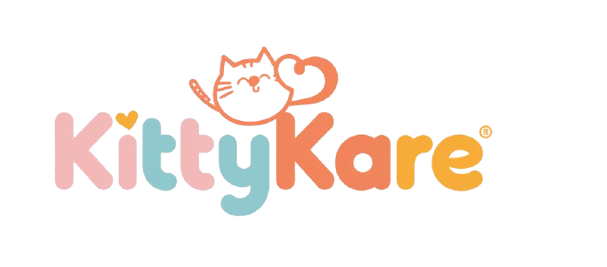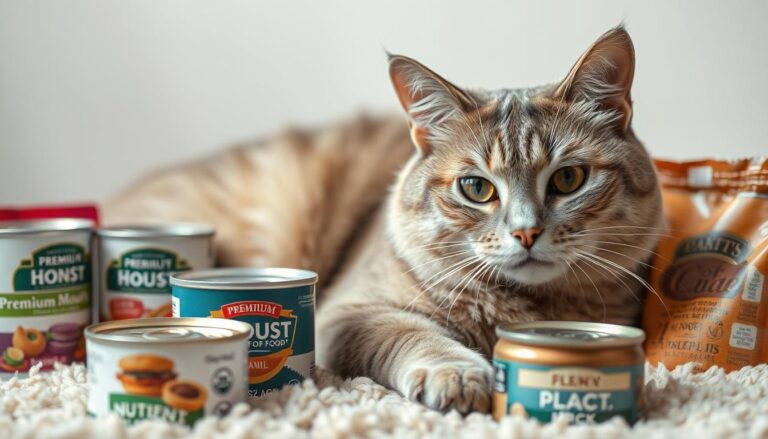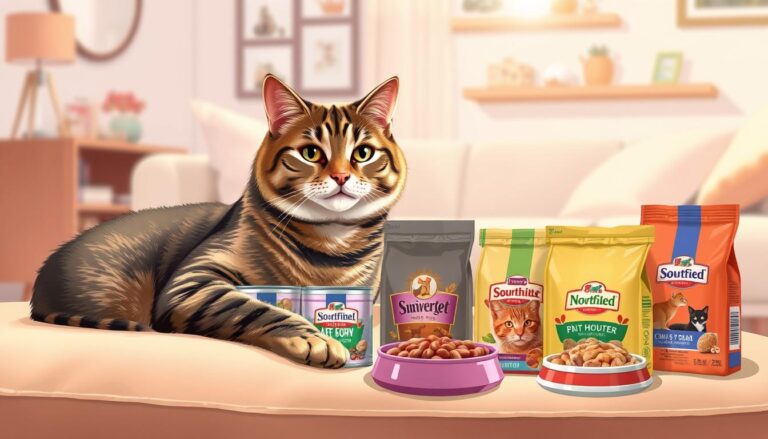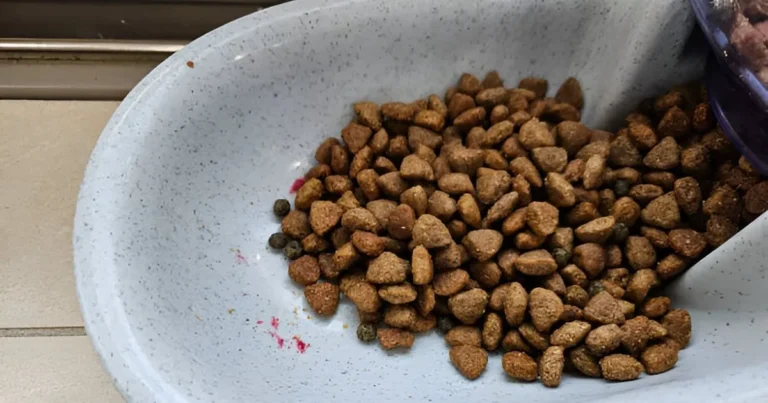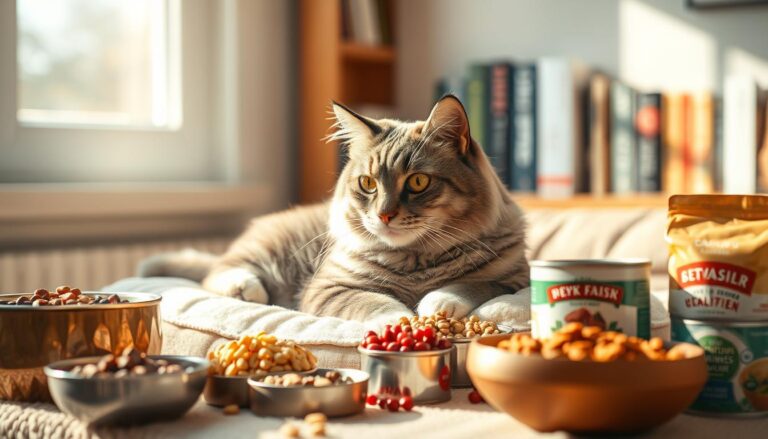When Can Kittens Eat Dry Food? A Guide to Transitioning to Kibble
Table of Contents
When Can Kittens Eat Dry Food? A Guide to Transitioning to Kibble
Bringing a new kitten home is exciting and raises many questions about their diet. Pet owners often ask when kittens can start eating dry food. They also wonder how to smoothly switch from milk to solid food. Knowing the right time and how to do it is key to your kitten’s health and growth.
Nutrition is very important for a kitten’s early life. Figuring out when kittens start eating solid food is a big question. Each step in their diet affects their health for the long term.
This guide will help you understand how to introduce dry food to your kitten. We’ll share expert advice, practical tips, and important information. This will help make the switch to solid food easy and healthy for your kitten.
Key Takeaways
- Kittens typically begin transitioning to solid food around 3-4 weeks old
- Mother’s milk remains crucial during early developmental stages
- Gradual introduction prevents digestive complications
- Specialized kitten food provides optimal nutritional balance
- Consistent monitoring supports healthy dietary adaptation
Understanding Kitten Nutrition Basics
Proper nutrition is key for a kitten’s health. Kittens have special dietary needs that change fast in their first months. Knowing these needs helps owners support their kitten’s growth and health.
Essential Nutrients for Growing Kittens
Kittens need a balanced diet for their fast growth. The main nutrients they require are:
- Protein: Important for muscle growth and overall development
- Fatty acids: Help with brain growth and healthy skin
- Calcium and phosphorus: Crucial for bone and tooth development
- Vitamins A, D, and E: Boost immune function and overall health
The Role of Mother’s Milk in Early Development
Mother’s milk is perfect for newborn kittens. It gives them vital antibodies for protection and all needed nutrients in the first weeks. The question of when kittens can eat wet food becomes important as they move from milk to solid food.
Importance of Proper Nutrition Timing
Introducing new foods to kittens at the right time is vital. Kittens usually start eating wet food around 3-4 weeks old. This gradual change ensures they get the best nutrition and learn to digest solid foods.
Veterinarians advise closely watching a kitten’s diet in the first few months to support healthy growth and development.
Owners should talk to their vet to make a nutrition plan for their kitten. The timing for kittens to eat wet food can vary based on their development and health.
When Can Kittens Start Eating Dry Food?
Introducing solid food to kittens is a big step in their early life. Kittens usually start eating solid foods around 3-4 weeks old. This is when they start to move away from just drinking milk.
Starting with wet food is common before they try dry kibble. Knowing when kittens can eat wet food helps owners guide them through this change.
- Week 3-4: Initial introduction to soft foods
- Week 4-5: Gradual increase in solid food consumption
- Week 6-7: Increased independence from mother’s milk
Vets suggest a slow and careful introduction to dry food. Kittens’ stomachs are sensitive and need gentle food changes to grow well.
| Age Range | Nutritional Transition | Recommended Food Type |
|---|---|---|
| 3-4 weeks | Initial solid food introduction | Wet kitten food |
| 4-6 weeks | Mixed feeding | Wet and softened dry food |
| 6-8 weeks | Primary solid food diet | Dry kitten kibble |
Kittens grow at their own pace, so watching their signs is key. Talking to a vet helps find the best food plan for each kitten.
The Weaning Process: From Milk to Solid Foods
Switching kittens from milk to solid foods is a big step. It’s important to know when they can start eating dry food. This change usually starts around 3-4 weeks old.
Signs Your Kitten is Ready for Weaning
Knowing when to start solid foods is key for a kitten’s health. Watch for these signs:
- Increased curiosity about solid foods
- Ability to stand and walk steadily
- Developing teeth
- Reduced dependency on mother’s milk
Gradual Transition Methods
Introducing dry food to kittens needs patience. Start with a soft kibble mixture made of:
- High-quality kitten dry food
- Warm water or kitten milk replacer
- Soft, mushy consistency
This helps kittens get used to new tastes and textures.
Common Weaning Challenges
Some kittens might not want to eat solid foods. You might face:
- Digestive sensitivity
- Reluctance to try new textures
- Inconsistent eating patterns
Vets suggest gentle, consistent methods for a smooth transition. Keeping an eye on their progress and getting professional advice is crucial.
Choosing the Right Dry Food for Your Kitten
Choosing the right dry food for your kitten is important. Kittens have different nutritional needs than adult cats. Knowing when to switch from kitten to cat food is key for your kitten’s health.
Kittens need special food to grow fast and strong. Look for dry food made just for kittens. It has the right mix of nutrients for them.
- High protein content (at least 30%)
- Balanced calcium and phosphorus levels
- Essential amino acids for muscle development
- Appropriate calorie density
When picking kitten dry food, consider these factors:
| Nutritional Factor | Kitten Requirements |
|---|---|
| Protein | 30-40% of total food content |
| Fat | 15-25% of total food content |
| Calorie Density | High energy needs |
Usually, kittens switch to adult food around 12 months of age. This is a big step in their diet. Vets say to slowly introduce adult food to avoid stomach problems.
Always talk to your vet about the best food for your kitten. Every kitten is different, and they may need different things.
How to Introduce Kibble to Your Kitten’s Diet
Switching kittens to dry food needs patience and planning. It’s important to do it slowly and carefully. This ensures they get the right food and adjust well.
Gradual Mixing Techniques
Start by mixing wet and dry food for your kitten. Here’s how to do it:
- Begin around 4-5 weeks when kittens can eat wet food
- Mix small amounts of moistened dry kibble with wet food
- Gradually increase dry food proportion over 1-2 weeks
- Ensure kibble is softened for easy consumption
Creating an Effective Feeding Schedule
Having a regular feeding schedule helps kittens adjust to new foods. Here’s a good plan:
| Kitten Age | Feeding Frequency | Food Composition |
|---|---|---|
| 4-6 weeks | 4-5 times daily | 75% wet food, 25% dry food |
| 7-8 weeks | 3-4 times daily | 50% wet food, 50% dry food |
| 9-12 weeks | 3 times daily | 25% wet food, 75% dry food |
Monitoring Your Kitten’s Response
Look for signs that your kitten is doing well with the new food:
- Consistent appetite
- Regular bowel movements
- Maintained energy levels
- Healthy coat and skin
Pro tip: Always consult your veterinarian for personalized dietary guidance specific to your kitten’s needs.
Common Concerns During the Transition Period
Switching kittens to dry food can be tricky for owners. Knowing when kittens start eating is key for a smooth change. Some kittens might be slow or have minor tummy troubles during this time.
Common worries include:
- Food refusal: Some kittens might not want to eat dry food at first
- Digestive sensitivity when introducing new foods
- Uneven eating patterns during transition
- Potential nutritional gaps
When do kittens start eating food varies. Usually, they start around 3-4 weeks old. Vets suggest a slow introduction to help.
Look out for these signs during the transition:
- Persistent vomiting
- Significant weight loss
- Complete food rejection
- Signs of discomfort after eating
If your kitten has trouble with dry food, see a vet. They can help make sure your kitten gets the right food during this important time.
Patience and consistency are key when introducing new foods to your kitten’s diet.
Best Practices for Feeding Dry Food to Kittens
Feeding dry food to kittens needs careful attention to nutrition and portion control. As your kitten grows, it’s important to understand the right feeding strategies. This is key for their health and development. Proper nutrition is the foundation for a strong and healthy adult cat.
Portion control is key when introducing kibble to your kitten’s diet. Young kittens need smaller, more frequent meals. Veterinarians suggest measuring food based on the kitten’s weight and age. They recommend starting with about 1/4 to 1/2 cup of high-quality kitten-specific dry food per day, divided into multiple servings.
Portion Control Guidelines
As kittens develop, their nutritional needs change. Most pet nutritionists suggest adjusting portion sizes every few weeks. By around 6 months, start tracking your kitten’s weight and consult with a veterinarian about when to switch from kitten to cat food. This transition usually happens between 10-12 months, depending on the breed and growth patterns.
Feeding Frequency Recommendations
Young kittens need more frequent meals than adult cats. Start with 3-4 small meals per day, gradually reducing to 2-3 meals as they get older. Always ensure fresh water is available, especially when feeding dry food. Talking to your veterinarian about when to switch from kitten to cat food will help you make the best nutritional choices for your kitten.
Maintaining Proper Hydration
Dry food can lead to dehydration, so it’s important to encourage water intake. Place multiple water bowls around your home, consider a cat water fountain, and mix wet food with dry kibble to increase moisture consumption. Regularly check your kitten’s water intake and overall health to keep them happy and well-nourished.
FAQ
When can kittens start eating dry food?
Kittens can start eating dry food around 3-4 weeks old. But remember, every kitten grows at their own pace. Start by softening the dry food with water to help them eat and digest better.
How do I know my kitten is ready for solid food?
Look for these signs: – They’re more active and curious about food – They can walk steadily – They show interest in their mother’s food – They have developing teeth – They’re around 3-4 weeks old
Should I start with wet or dry food first?
Start with wet food first. It’s easier for kittens to eat and digest. Then, you can mix in dry kibble gradually.
How often should I feed my kitten dry food?
Young kittens need 4-5 small meals a day. As they grow, you can reduce this to 3-4 meals. Always make sure they have fresh water. Follow the feeding guidelines on the kitten food packaging.
When should I switch from kitten to adult cat food?
Most cats are ready for adult food around 12 months old. But larger breeds might need kitten food until 18 months. Talk to your vet to find the best time for your cat.
Can I leave dry food out all day for my kitten?
Free-feeding can be convenient, but it’s not always best. Scheduled feeding helps you monitor their intake and prevents overeating. Dry food can get stale if left out too long.
What should I do if my kitten refuses to eat dry food?
Try these strategies: – Mix dry food with wet food – Warm the food slightly – Soften the kibble with water – Try different brands or flavors – Be patient and consistent If problems persist, see your vet to rule out health issues
How do I transition my kitten from wet to dry food?
Gradually transition over 7-10 days: – Start by mixing a small amount of dry food with wet food – Slowly increase the dry food – Decrease the wet food – Ensure the kibble is softened initially – Monitor your kitten’s response and adjust as needed
